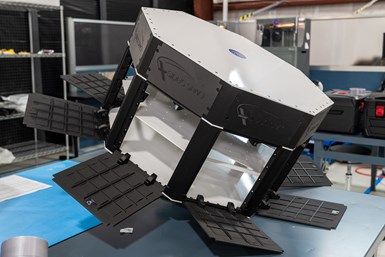Mike Schultz has been involved in powersports as far back as he can remember. He got serious about motocross in high school, which quickly evolved into racing snowmobiles. Schultz fought hard to work his way up the ranks of the racing circuit, and he ended up regularly traveling nationally and internationally to race snowmobiles. “I was living my dream as one of the best snocross racers in the world,” says Schultz.
A Different Kind of Injury
In 2008, Schultz had just signed with a new racing team. On the second round of the International Series of Champions (ISOC) Snocross Championship, he got a horrible start and decided to push hard to make up lost time. While racing down rough terrain Schultz hit a dip on the track and was catapulted from his snowmobile.
He landed with all his weight on his left leg, which was fully extended on impact. The extreme force caused his leg to crumple. “My foot ended up on top of my chest in the wrong direction,” recounts Schultz. “I [literally] kicked myself in the chin with my toe.”
Schultz had broken many bones in his racing career, but this injury was a far cry from a simple bone fracture. To survive the crash, his left leg had to be amputated about three inches above the knee.
Always Move Forward
Schultz’s dad said that one of the first things his son said after waking up from the surgery was, “Get on with life.” In the spring of 2009, Schultz got up on his first prosthetic leg. A few months later, he realized he needed something better: a prosthetic that would enable him to get back into powersports. Schultz was convinced he could design one himself.
As a powersports athlete, Schultz knew how his body needed to function to be successful on the racetrack. He also understood suspension and the various mechanical components of his racing machines. Now his task was applying that understanding to building a new leg.
With a natural interest in how things work, his training from a ninth-grade drafting class, and lots of paper (and even more erasers), Schultz designed a new leg that would enable him to continue doing the things he loved. After six weeks of drawing and redrawing a solution, Schultz knew his invention would soon get him back into powersports.
Seven months after his injury, Schultz competed in the Summer XGames supercross event and won a silver medal—on the leg he designed in his garage.
Who Else Needs Help?
That’s when Schultz began to fully grasp that his prosthetic device could help more people than just himself.
Schultz knew there were a lot of amputees who wanted to snowboard or do other activities, and he also had a special passion for helping veterans. Schultz started thinking about how he could make the equipment more versatile. In early 2010 he started a company called BioDapt with the goal of creating the highest performance lower-limb prosthetic equipment for action and powersport activities on the market.
Facing Design Challenges
Schultz explains what he wants from his 2D drawings to his company’s design team, and a CAD designer builds the design in 3D. “SOLIDWORKS makes the process so much easier and quicker and allows us to do so many more things,” Schultz enthuses. “We can build the assemblies virtually and then digitally test them with SOLIDWORKS Simulation to see where the weak points are.”
Read the full article here.
To learn more about SOLDIWORKS products, contact The SolidExperts and an expert will be happy to help.


SUBMIT YOUR COMMENT